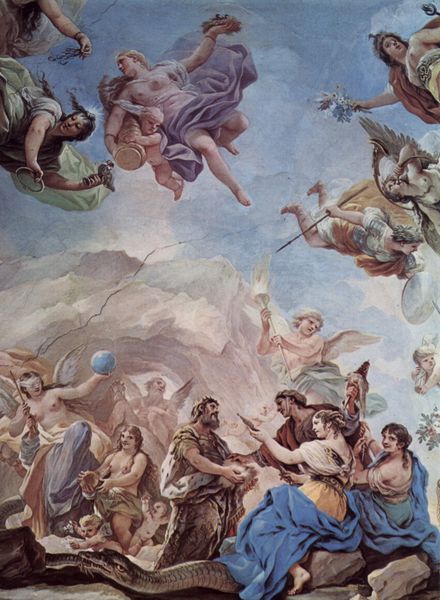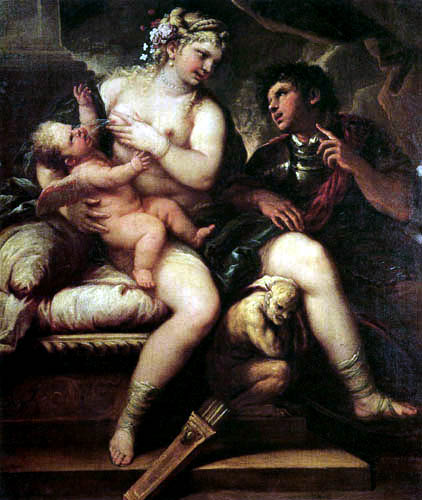Luca Giordano (1634 – 1705)
Get a Giordano Certificate of Authenticity for your painting or a COA for your Boucher drawing or print.
For all your Giordano artworks you need a Certificate of Authenticity in order to sell, to insure or to donate for a tax deduction.
How to get a Giordano Certificate of Authenticity is easy. Just send us photos and dimensions and tell us what you know about the origin or history of your Giordano painting, drawing or print.
If you want to sell your Giordano painting, drawing or print use our selling services. We offer Giordano selling help, selling advice, private treaty sales and full brokerage.
We have been authenticating Giordano and issuing certificates of authenticity since 2002. We are recognized Giordano experts and Giordano certified appraisers. We issue COAs and appraisals for all Giordano artworks.
Our Giordano paintings, drawings and print authentications are accepted and respected worlwide.
Each COA is backed by in-depth research and analysis authentication reports.
The Giordano certificates of authenticity we issue are based on solid, reliable and fully referenced art investigations, authentication research, analytical work and forensic studies.
We are available to examine your Giordano painting, drawing or print anywhere in the world.
You will generally receive your certificates of authenticity and authentication report within two weeks. Some complicated cases with difficult to research Giordano paintings or drawings take longer.
Our clients include Giordano collectors, investors, tax authorities, insurance adjusters, appraisers, valuers, auctioneers, Federal agencies and many law firms.
We perform Luca Giordano art authentication, appraisal, certificates of authenticity (COA), analysis, research, scientific tests, full art authentications. We will help you sell your Luca Giordano or we will sell it for you.

Luca Giordano was an eclectic, peripatetic, and influential Italian late Baroque painter and printmaker in etching. Born in Naples, he was the son of Antonio Giordano, an undistinguished painter. At a precocious age, he was apprenticed to Ribera on the recommendation of the viceroy of Naples. He supposedly later worked under Pietro da Cortona.
He acquired the nickname of Luca Fà-presto (Luke Work-fast). This nickname was apt since he showed an astounding celerity in handled the brush, but it is said to have been given to him by his father, poverty-stricken and greedy of gain, was perpetually urging his boy to exertion with the phrase, “Luca, fà presto”. The youth obeyed his parent to the letter, and would actually not so much as pause to snatch a hasty meal, but received into his mouth, while he still worked on, the food which his father’s hand supplied.
His speed, in design as well as handiwork, and his versatility, which enabled him to imitate other painters deceptively, earned for him two other epithets, “The Thunderbolt” (Fulmine) and “The Proteus” of painting.

Giordano acquired a style fusing Venetian and Roman styles. He combines the ornamental pomp of Paul Veronese with the lively complex schemes, the “grand manner” of Pietro da Cortona. He was noted also for lively and showy color, and between 1682-83 he painted various fresco series in Florence, including in the dome of Corsini Chapel of the Chiesa del Carmine. In the large block occupied by the former Medici palace, he painted the ceiling of the Biblioteca Riccardiana (Wisdom released from the Slavery of Ignorance) and the long gallery of the Palazzo Medici-Riccardi. The vast frescoes of the latter are contained in the 1670s gallery addition, overlooking the gardens. The planning was overseen by Alessandro Segni and commissioned by Francesco Riccardi. They include the prototypic hagiographic celebration of the Medici family in the center, surrounded by a series of interlocking narratives: allegorical figures (the Cardinal Virtues, the Elements of Nature) and mythological episodes (Neptune and Amphitrita, the Rape of Proserpine, the Triumphal procession of Bacchus, the Death of Adonis, Ceres and Triptolemus).

Charles II of Spain towards 1687 invited him over to Madrid, where he remained for 10 years (1692-1702). In Spain, he produced works for the Royal Palace of Madrid, El Escorial, Toledo, and other sites. Giordano was popular at the Spanish court, and the king granted him title as a “caballero”.
One anecdote of Giordano’s speed at painting is that, he was once asked by the Queen of Spain what his wife looked like. On the spot, he painted his wife into the picture before him for the Queen.

In Spain he executed numerous works, continuing in the Escorial the series commenced by Cambiasi, and painting frescoes of the Triumphs of the Church, the Genealogy and Life of the Madonna, the stories of Moses,Gideon, David and the Celebrated Women of Scripture, all works of large dimensions. His Dream of Solomon (1693, now at Prado) dates from this period. His pupils, Aniello Rossi and Matteo Pacelli, assisted him in Spain. In Madrid he worked more in oil-colour, a Nativity there being one of his best productions.
Soon after the death of Charles in 1700, Giordano, now wealthy, returned to Naples. He spent large sums in acts of munificence, and was particularly liberal to his poorer brother artists. One of his maxims was that the good painter is the one whom the public like, and that the public are attracted more by color than by design.

Giordano had an astonishing facility, which often lead to an impression of superficiality of his works. He left many works in Rome, and far more in Naples. Of the latter, his “Christ expelling the Traders from the Temple,” in the church of the Padri Girolamini, a colossal work, full of expressive “lazzaroni”; also the frescoes of the Triumph of Judith at San Martino[3], and those in the Tesoro della Certosa, including the subject of Moses and the Brazen Serpent; and the cupola paintings in the Church of S. Brigida, which contains the artist’s own tomb.
Other superior examples are the Judgment of Paris in the Berlin Museum, and Christ with the Doctors in the Temple, in the Corsini Gallery of Rome. In Florence, in his closing days, he painted the Cappella Corsini, the Galleria Riccardi and other works. In youth he etched with considerable skill some of his own paintings, such as the Slaughter of the Priests of Baal. He also painted much on the crystal borderings of looking-glasses, cabinets and others seen in many Italian palaces, and was, in this form of art, the master of Pietro Garofalo. His best pupil in painting was Paolo de Matteis. However, his influence, like his travels and career, were broad and prolific. For example, he is said to have influenced in Venice, Giovan Battista Langetti, Giovanni Coli, and Filippo Gherardi [1]. Other pupils include Joun Antonio Boujas, Nunzio Ferraiuoli (Nunzio degli Afflitti), Ansel Fiammingo, il Franceschitto, Giovanni Battista Lama, Andrea Miglionico, Giuseppe Simonelli, Andrea Vicenti, and Andrea Viso.Luca Giordano died in Naples in 1705.

Still wondering about an Italian painting in your family collection? Contact us…it could be by Luca Giordano.
Reviews
1,217 global ratings
5 Star
4 Star
3 Star
2 Star
1 Star
Your evaluation is very important to us. Thank you.
